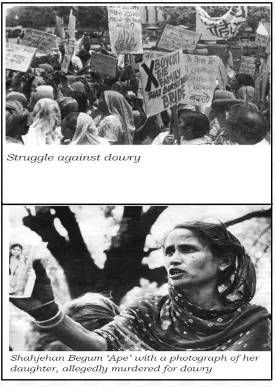![]() 12 Dec 2023
12 Dec 2023
Women’s movements in India have played a pivotal role in shaping the socio-political landscape, challenging ingrained norms, and advocating for the rights and empowerment of women. From the early 20th century to the present day, these movements have evolved in response to diverse challenges, encompassing issues such as gender equality, reproductive rights, violence against women, and economic empowerment.
|
Studies on poor women in South Asia have shown that often they are forced to give their small savings to their husbands who demand it for their drinks. They then devised a way out by hiding their money in two places. When they were forced to give up their hard-earned saving, they gave the money from of one of the hiding places. And thereby ensuring the safety of the other saving. |
|---|
|
The Right to Vote
Britain’s Struggle:
|
|---|
Women’s Participation in Agrarian Struggles and Revolts: Women in Agrarian Movements

Women’s Movement
|
POINTS TO PONDER For ensuring a socially equal society it is very important to have a gender just society. For achieving that we need women empowerment. In this regard what are your views on recently passed Women Reservation Bill in parliament? |
|---|
The Upper Caste Response to The Women’s Movement in India: Upper Caste Perspectives and Social Progress
Post-Independence Social Progress: Examining Caste Disparities
<div class="new-fform">
</div>